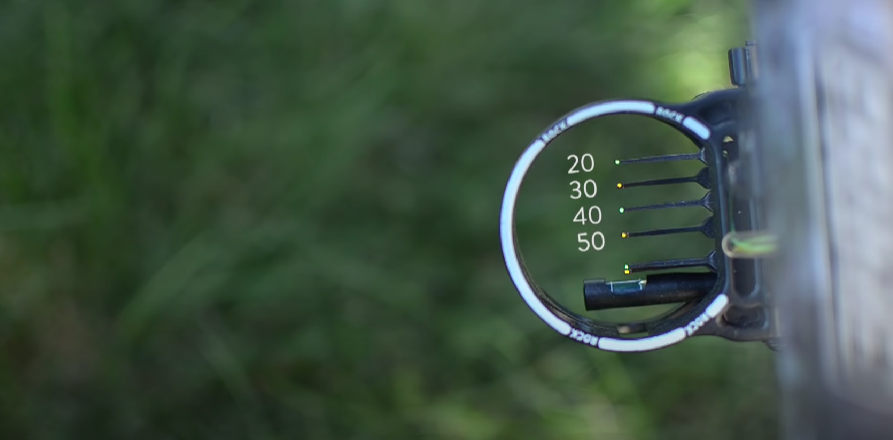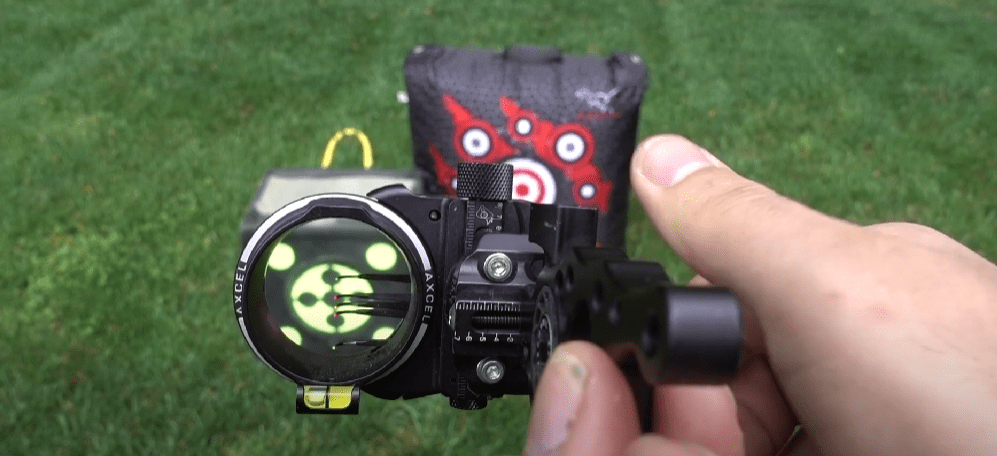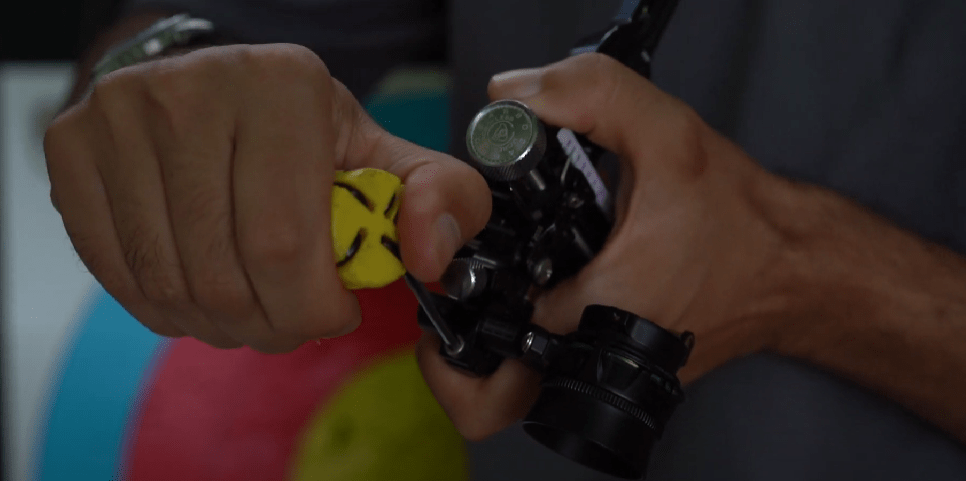To adjust a compound bow sight, follow these simple steps: 1) Loosen the mounting bolts using an Allen wrench, 2) Align the sight with the target by adjusting the vertical and horizontal settings, and 3) Tighten the bolts to secure the sight in place.
Have you ever been out on the archery range, excited to shoot your compound bow, only to find that your arrows keep missing the target? It’s frustrating, and it can ruin your day. But before you give up, consider that the problem might not be with your aim, but with your bow sight. Knowing how to adjust compound bow sight can make all the difference in your accuracy. Here are the steps to take.
Gathering The Necessary Tools
Before you can adjust your compound bow sight with precision, it’s important to gather the necessary tools. Having the right equipment at hand will ensure a smooth and effortless process. So, let’s take a look at the essential tools you will need:
Allan Wrenches
Allan wrenches are an integral part of any archer’s toolbox. These hexagonal-shaped tools come in various sizes to fit different screws and bolts commonly found on a compound bow. Make sure you have a set of Allan wrenches readily available. This will enable you to adjust your bow sight with ease and accuracy.
Bow Press (if necessary)
In some cases, adjusting a compound bow sight may require the use of a bow press. A bow press is a tool used to flex the limbs of a bow, relieving the tension on the bowstring. This allows you to make adjustments to the bow’s components, including the sight. If your bow requires the use of a bow press, ensure you have one on hand before starting the adjustment process.
Adjustable Bow Sight
The most crucial tool for adjusting a compound bow sight is, of course, the adjustable bow sight itself. This is the component that allows you to fine-tune your aim and improve your accuracy. There are various types of bow sights available, including fixed pin sights, single pin sights, and adjustable pin sights. Choose a sight that suits your shooting style and preferences. It’s also essential to ensure that the sight is compatible with your bow model.
Now that you have gathered your essential tools, you’re ready to embark on the journey of adjusting your compound bow sight. With the right equipment at your disposal, you can quickly and effectively make the necessary modifications to achieve optimal precision and accuracy in your shots.

Step 1: Leveling The Bow Sight
Leveling the bow sight is an essential first step in ensuring accurate and consistent shots with your compound bow. A level sight ensures that your arrows will fly straight and true to their target. In this guide, we will walk you through the process of leveling your bow sight, starting with the importance of a level sight.
Importance of a Level Sight
A level sight is crucial for achieving accuracy while shooting with a compound bow. When your sight is level, it allows you to align your bow and target properly, minimizing the chances of your shots going astray. Whether you are a beginner or an experienced archer, having a level bow sight will greatly enhance your accuracy and consistency.
Using a Bubble Level to Ensure Proper Leveling
One of the easiest ways to ensure that your bow sight is level is by using a bubble level. You can find bubble levels specifically designed for archery purposes. Let’s break down the steps to use a bubble level:
- Attach the bubble level to the sight bracket of your compound bow.
- Hold your bow in a normal shooting position.
- Observe the bubble level to determine whether the sight is level.
- If the bubble is centered between the reference lines, your bow sight is adequately leveled. If not, proceed to the next step.
Adjusting the bubble level can be done by loosening the bolts that attach it to the sight bracket and manually tilting it until the bubble is centered. Take your time to ensure accurate leveling.
Adjusting the Sight Housing
Once your bow sight bracket is level, the next step is adjusting the sight housing. The sight housing is the part that holds the pins or reticle used for aiming. Here’s how you can adjust it:
- Make sure your bow is secured or locked in a vise, or you have a reliable bow vice for convenience.
- Look through the peep sight while focusing on a distant target.
- If the target appears slightly higher or lower than the sight housing, adjustments are needed.
To lower the sight housing, turn the vertical adjustment knob clockwise, while turning it counterclockwise to raise the housing. Make small adjustments and test your aiming. Repeat the process until the sight housing lines up perfectly with your target.

Remember, practice makes perfect when it comes to adjusting your compound bow sight. Take your time, be patient, and consider seeking assistance from a professional archer or technician if you’re unsure. By ensuring your bow sight is accurately leveled, you’re setting yourself up for more accurate and consistent shots.
Step 2: Adjusting The Vertical Sight Pin
Once you have understood the basic concept of the vertical adjustment mechanism in a compound bow sight, it’s time to dive into the actual process of fine-tuning the vertical sight pin. This step is crucial for achieving accurate shots at different distances. In this section, we will guide you through the steps involved in adjusting the vertical sight pin to improve your aiming precision.
Understanding the vertical adjustment mechanism
The vertical adjustment mechanism of a compound bow sight allows you to move the sight pin up or down to align it with your target. This adjustment is performed using an allen wrench, which typically comes with your bow sight. Understanding how this mechanism works is essential to make the necessary adjustments effectively.
Using the allen wrench to move the sight pin up or down
To adjust the vertical sight pin, you will need to loosen the screws that hold the sight housing in place. Once the screws are loosened, you can use the allen wrench to move the sight pin up or down. Turning the wrench clockwise moves the pin up, while turning it counterclockwise moves the pin down. This allows you to align the sight pin with your target at varying distances.
Fine-tuning the vertical position for different distances
When adjusting the vertical sight pin, it’s important to remember that each distance requires a specific setting. For shorter distances, you may need to raise the sight pin slightly to compensate for the arrow’s trajectory. On the other hand, longer distances may require you to lower the sight pin to ensure accurate aiming. Experimenting with different adjustments and testing your shots at various distances will help you determine the optimal vertical position for each distance.
Make sure to tighten the screws holding the sight housing securely once you have made the necessary adjustment to prevent any unintentional movement during use. Regularly inspecting and readjusting the vertical sight pin as needed will ensure that your compound bow sight remains calibrated for optimal accuracy.
In conclusion, adjusting the vertical sight pin is a vital step in fine-tuning the aiming precision of your compound bow sight. Understanding the vertical adjustment mechanism, utilizing the allen wrench to move the sight pin, and fine-tuning the vertical position for different distances will help you achieve consistent and accurate shots. Practice, experimentation, and regular adjustments are key to becoming proficient in using your compound bow sight effectively.
Step 3: Adjusting The Horizontal Sight Pin
Understanding the Horizontal Adjustment Mechanism
Before you can fine-tune your compound bow sight for perfect accuracy, it’s essential to understand how the horizontal adjustment mechanism works. This mechanism allows you to move the sight pin left or right, ensuring that your aim is spot-on. By mastering this adjustment, you can align the pin with the arrow rest for precise shooting. Let’s delve into the exact steps for adjusting the horizontal sight pin.
Using the Allen Wrench to Move the Sight Pin Left or Right
Once you have identified the horizontal adjustment mechanism on your compound bow sight, it’s time to utilize the handy allen wrench. This tool allows you to move the sight pin either to the left or right, depending on your needs. To make the adjustment, insert the allen wrench into the designated screw or bolt, and apply gentle pressure to turn it in the desired direction. Be sure to pay close attention to each turn, as slight adjustments can make a significant impact on your accuracy. Remember, practice and experimentation may be necessary to find the ideal position for your shooting style.
Aligning the Pin with the Arrow Rest for Accurate Shooting
Once you have made the necessary horizontal adjustments using the allen wrench, it’s time to align the pin with the arrow rest. This step is crucial for ensuring accurate shooting. Start by visually aligning the pin with the arrow rest, making sure they are in perfect alignment. If needed, make further adjustments using the allen wrench until the pin and arrow rest are perfectly aligned. Keep in mind that small tweaks might be required until you achieve the desired precision.
By thoroughly understanding the horizontal adjustment mechanism, properly utilizing the allen wrench to move the sight pin, and aligning the pin with the arrow rest, you can ensure accurate shooting with your compound bow. Taking the time to fine-tune your bow sight is well worth the effort, as it can greatly improve your overall shooting performance. Next, let’s move on to Step 4: Adjusting the Vertical Sight Pin for maximum accuracy in every shot.
Step 4: Fine-Tuning The Sight Marks
Now that you have adjusted the basic sight pins in Step 3, it’s time to fine-tune the sight marks to ensure the utmost accuracy in your compound bow. Fine-tuning the sight marks is crucial to hit your target consistently and precisely. This step involves using a target for reference, making slight adjustments to the sight pins, and repeating the process until your desired accuracy is achieved.
Using a target for reference
Using a target as a reference point is essential to accurately adjust your sight marks. Place your target at a reasonable distance, ensuring it is horizontal and steady. It’s recommended to position the target at a distance that matches your desired shooting range. This will help you determine the accuracy of your aim and make necessary adjustments accordingly.

Making slight adjustments to the sight pins for better precision
Once your target is set, carefully observe your arrow placement on the target. Pay attention to where your arrows are hitting in relation to your actual aim. To make slight adjustments to the sight pins, you can use an Allen wrench to loosen the screws that secure each pin. Gently move the sight pins either up, down, left, or right, depending on the direction you need to adjust them for better precision. Remember to tighten the screws securely after each adjustment to ensure they stay in place.
Repeating the process until desired accuracy is achieved
After making the initial adjustments, it’s important to repeat the process of shooting arrows, observing the impact point on the target, and readjusting the sight pins as necessary. This iterative process allows you to fine-tune your sight marks incrementally until you achieve the desired accuracy. Remember to take your time and be patient throughout the process. Each adjustment brings you closer to achieving consistent and precise shots.
By continuously shooting arrows, analyzing the impact points, and making slight adjustments to your sight pins, you can gradually refine your compound bow’s accuracy. It’s essential to repeat this process until you achieve the desired precision. Keep in mind that the time and effort invested in fine-tuning your sight marks will ultimately pay off when you consistently hit your target with confidence!

- Top 10 Tips for Improving Your Archery Form
- 8 Best Compound Bow for Beginners | Find Your Perfect Fit
Frequently Asked Questions For How To Adjust Compound Bow Sight
How Do You Adjust The Sight On A Bow?
To adjust the sight on a bow, follow these steps: 1) Identify the adjustment screws on the sight. 2) Determine the desired direction for the sight movement. 3) Use the appropriate screwdriver to make small adjustments. 4) Test the sight by shooting arrows and evaluate the alignment.
How Do You Level A Bow Sight At Home?
To level a bow sight at home, follow these steps: 1. Check if the sight bubble is centered. 2. Make sure the sight is level with the bow’s riser. 3. Use a leveling device or app to confirm the sight’s levelness.
4. Adjust the sight’s pins to align with your target. 5. Test and fine-tune your sight’s accuracy before use.
What Should Bow Sights Be Set On?
Bow sights should be set according to your individual shooting style, preferences, and the desired accuracy. It is crucial to find the right balance between sight distance, accuracy, and personal comfort. Experiment with different settings and consult with experienced archers to determine the optimal sight position for you.
How Do You Adjust The Draw On A Compound Bow?
To adjust the draw on a compound bow, start by using an Allen wrench to adjust the draw weight. Then, use a bow press to adjust the draw length by twisting the cable or string. Continue making small adjustments until you achieve the desired draw on your compound bow.
Conclusion
To conclude, adjusting the sight on your compound bow is an essential aspect of improving your accuracy and overall performance. By following the step-by-step instructions outlined you can ensure that your bow is properly calibrated for precision shooting. Remember to practice patience and make small adjustments at a time to achieve the desired results.
With the right adjustments, you’ll be hitting bullseyes in no time! Happy shooting!







